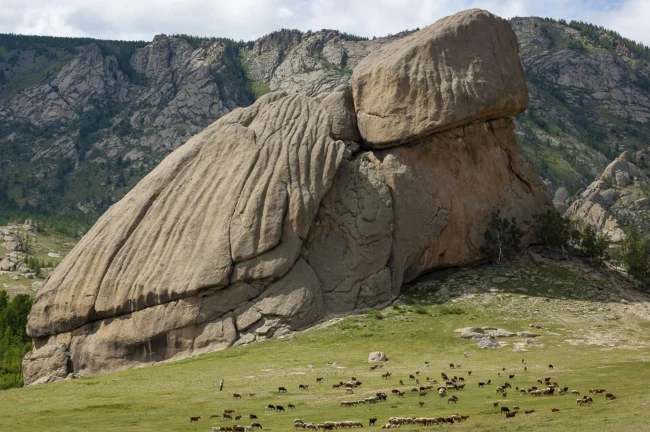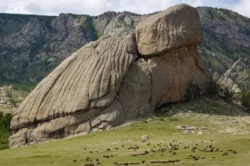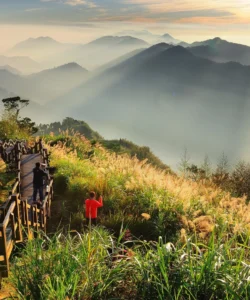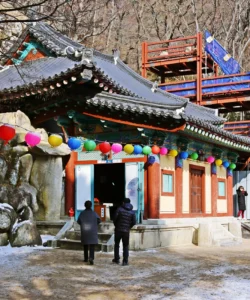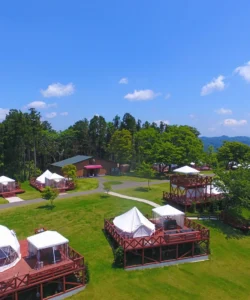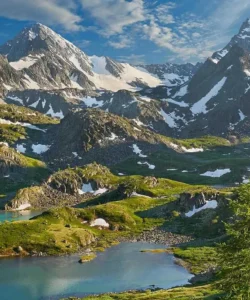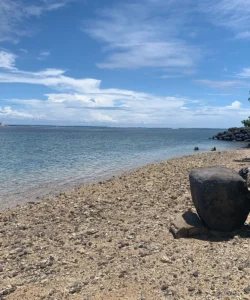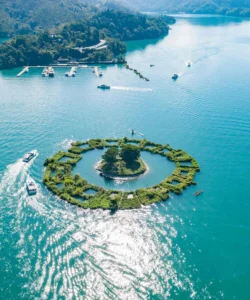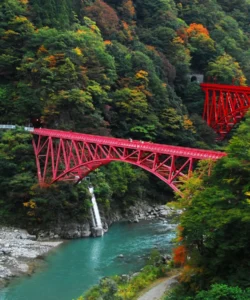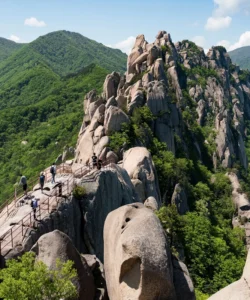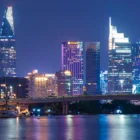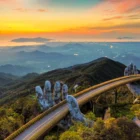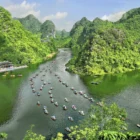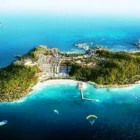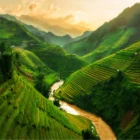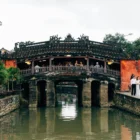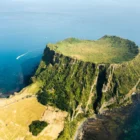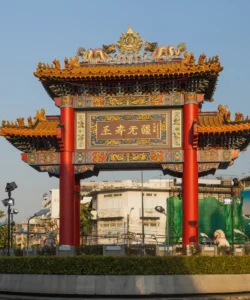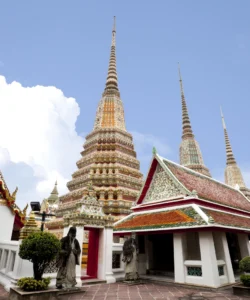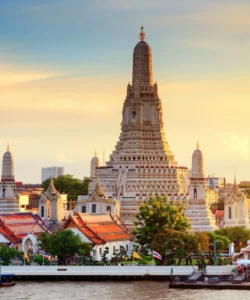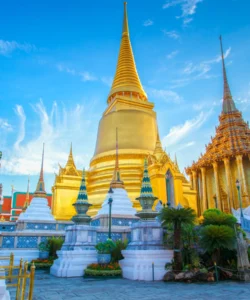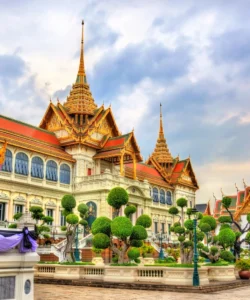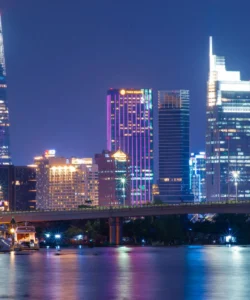Gorkhi-Terelj National Park, commonly known as Terelj National Park, is a stunning protected area nestled in the Khentii Mountains, northeast of Mongolia’s capital, Ulaanbaatar. It’s one of the most popular and easily accessible national parks in the country, offering a diverse landscape of dramatic rock formations, vast meadows, and tranquil forests, alongside opportunities to experience traditional Mongolian nomadic culture.
Name: Gorkhi-Terelj National Park (Горхи-Тэрэлж үндэсний цэцэрлэгт хүрээлэн)
Address: Tuv Province, Mongolia. Approximately 65-70 kilometers (40-43 miles) northeast of Ulaanbaatar.
How to get there:
Being the closest national park to Ulaanbaatar, Terelj is highly accessible:
- By Private Car/Taxi: This is a very common and convenient option. The drive takes about 1.5 hours on mostly paved roads. You can hire a private driver for a day trip or longer, often arranged through hotels or tour operators in Ulaanbaatar. Negotiating a fixed price in advance is recommended.
- By Organized Tour: Many tour operators in Ulaanbaatar offer day trips or multi-day tours to Terelj, which typically include transportation, guides, meals, and activities like horseback riding and ger camp stays. This is often the most hassle-free option for first-time visitors.
- By Public Bus/Minibus: This is the most budget-friendly option, though it requires more effort. You can take a public bus from Ulaanbaatar’s Dragon Bus Terminal to Nalaikh District, and then transfer to a minibus (or shared taxi) that goes to Terelj village within the park. This option is less frequent and can be confusing without local language skills.
- Rental Car: Renting a car (preferably a 4×4, especially outside of summer) offers maximum flexibility for exploring the park at your own pace.
Landscape and Architecture:
Terelj National Park is characterized by its breathtaking and varied natural beauty:
- Granite Rock Formations: The park is famous for its unique and often bizarrely shaped granite rock formations, sculpted by centuries of wind and water erosion. The most iconic of these is Turtle Rock (Melkhii Khad), a massive granite outcrop that strikingly resembles a turtle. Other notable formations include Praying Lama Rock (also called Old Man Reading a Book).
- Rolling Hills and Valleys: Lush, rolling green hills carpeted with wildflowers in summer and covered in snow in winter define much of the park’s landscape. These meadows are often dotted with nomadic ger camps and grazing livestock.
- Forests: The northern slopes of the hills and mountains are typically covered with dense evergreen forests, primarily pine, larch, and birch trees, adding to the alpine scenery.
- Rivers and Streams: The Terelj River winds through the park, providing scenic spots for relaxation, fishing, and even rafting in some sections.
- Aryabal Meditation Temple: Perched on a hillside, this Buddhist temple complex features distinctive architecture, including many small stupas and prayer wheels, leading up to the main temple. It offers incredible panoramic views of the surrounding valleys.
- Ger Camps: Throughout the park, especially in the more developed tourist zone, you’ll find numerous ger camps (traditional Mongolian felt tents or yurts). These are not ancient architectural wonders but are a central part of the nomadic culture, providing accommodation for visitors seeking an authentic Mongolian experience. Some are basic, while others offer more luxurious amenities.
- Statue of Genghis Khan: While not strictly within the national park boundaries, the colossal Genghis Khan Equestrian Statue Complex is located on the way to Terelj National Park and is almost always included in tours to the area. This impressive stainless steel statue, towering at 40 meters, is a modern architectural marvel and a significant cultural symbol.
What makes it famous:
Terelj National Park is famous for:
- Accessibility from Ulaanbaatar: Its close proximity to the capital makes it an ideal destination for day trips or short getaways, allowing visitors to experience Mongolia’s natural beauty and nomadic culture without extensive travel.
- Iconic Rock Formations: Turtle Rock is a universally recognized symbol of the park and one of Mongolia’s most photographed natural landmarks.
- Experiencing Nomadic Life: The park offers abundant opportunities to visit nomadic families, ride horses or Bactrian camels, and stay in traditional ger camps, providing an immersive cultural experience.
- Outdoor Activities: It’s a hub for various outdoor pursuits, including hiking, trekking, horseback riding, rock climbing, camping, and even skiing or ice skating in winter.
- Scenic Beauty: Its unique combination of diverse landscapes – from alpine forests to vast steppes and dramatic rock formations – makes it exceptionally picturesque and a favorite among nature lovers.
- Aryabal Meditation Temple: This serene temple offers not only spiritual tranquility but also some of the best vantage points for panoramic views within the park.
Differences from some other wonders:
Terelj National Park stands apart from many other “wonders” due to its specific characteristics:
- Focus on Nature and Nomadic Culture: Unlike purely historical sites (e.g., Fortaleza do Monte, Taipa Houses-Museum) or modern architectural marvels (e.g., Macau Tower), Terelj is primarily a natural wonder that uniquely integrates a vibrant, living nomadic culture. It’s not about ancient ruins or urban development, but about the raw beauty of the steppe and the traditional lifestyle of its people.
- Accessibility and Comfort for a Wilderness Experience: Compared to more remote Mongolian national parks (like Khuvsgul Lake National Park or Altai Tavan Bogd National Park), Terelj offers a relatively “comfortable” and easily accessible wilderness experience. It has developed infrastructure, including paved roads to key attractions and numerous ger camps, making it suitable for a wider range of travelers, including families.
- Unique Geology: While other parks might have mountains or forests, the prominent and often whimsical granite rock formations (like Turtle Rock) are a distinctive geological feature of Terelj, giving it a unique visual identity compared to many other national parks globally.
- Four Seasons Appeal: Terelj is beautiful year-round. While many parks are seasonal, Terelj offers distinct experiences in all four seasons, from lush green summers to vibrant autumns, snow-covered winters ideal for skiing, and blooming springs.
- Gateway to Mongolia’s Steppe Culture: For many visitors, Terelj serves as a first and essential introduction to Mongolia’s vast steppe landscapes and its enduring nomadic heritage, often providing a concentrated “taste” of what the larger country offers.
